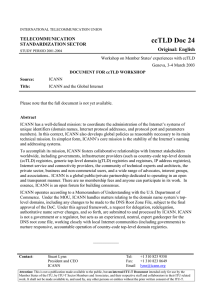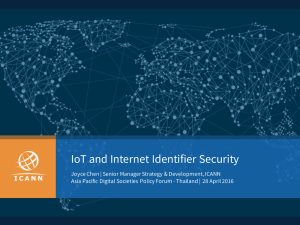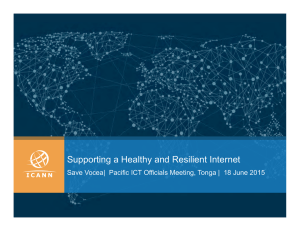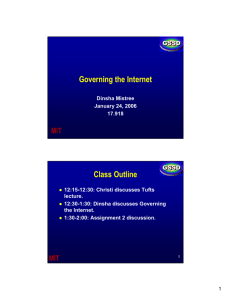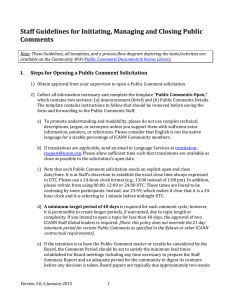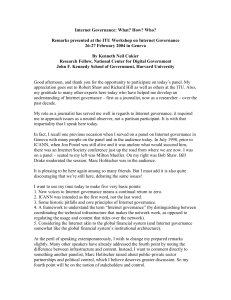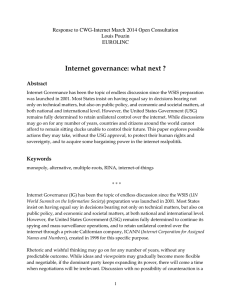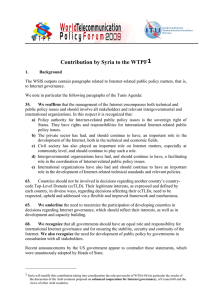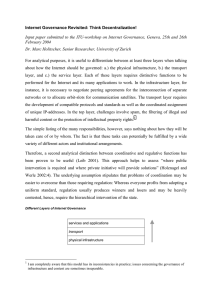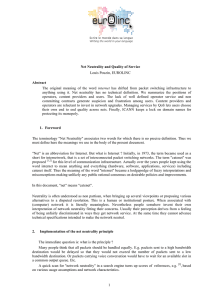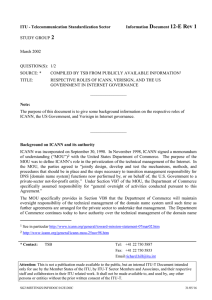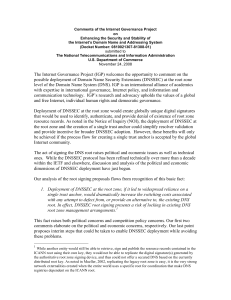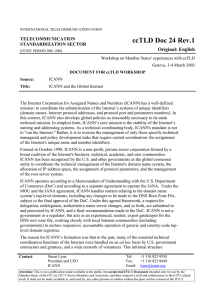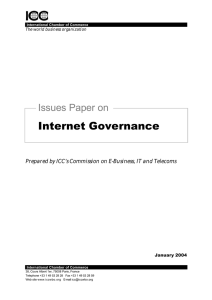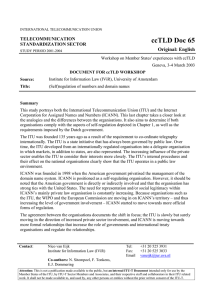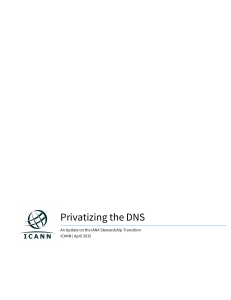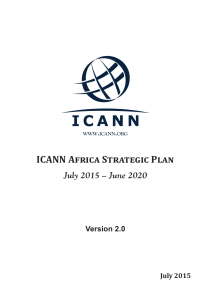Talk Outline, Part 1: Universal Protocols Slide 3:
advertisement
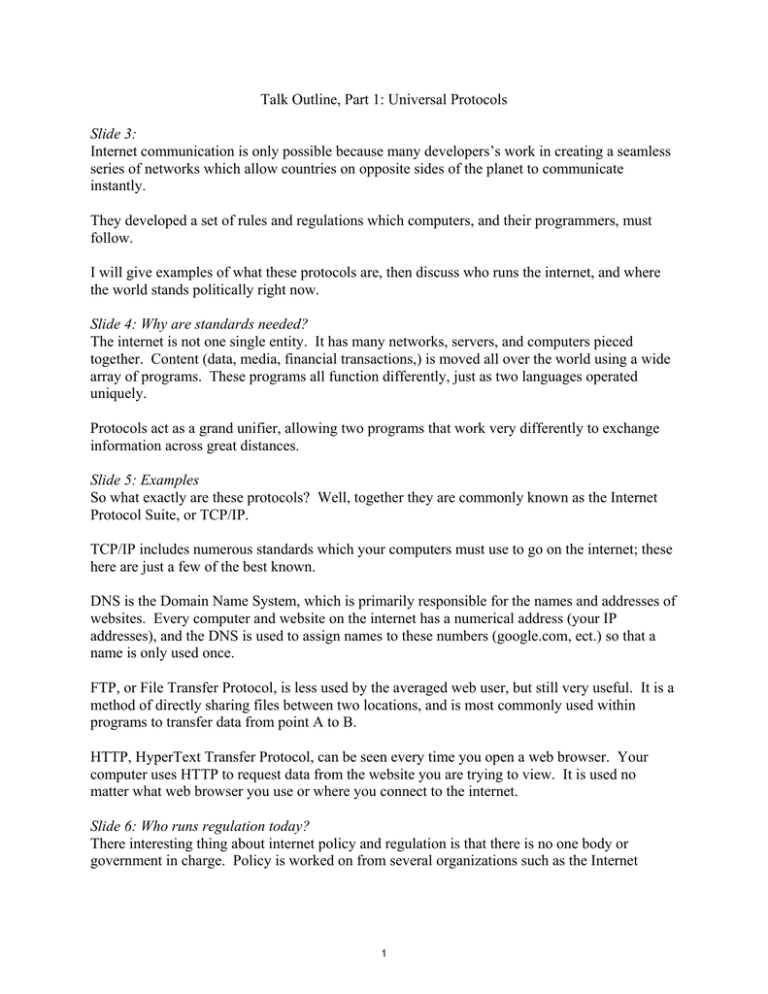
Talk Outline, Part 1: Universal Protocols Slide 3: Internet communication is only possible because many developers’s work in creating a seamless series of networks which allow countries on opposite sides of the planet to communicate instantly. They developed a set of rules and regulations which computers, and their programmers, must follow. I will give examples of what these protocols are, then discuss who runs the internet, and where the world stands politically right now. Slide 4: Why are standards needed? The internet is not one single entity. It has many networks, servers, and computers pieced together. Content (data, media, financial transactions,) is moved all over the world using a wide array of programs. These programs all function differently, just as two languages operated uniquely. Protocols act as a grand unifier, allowing two programs that work very differently to exchange information across great distances. Slide 5: Examples So what exactly are these protocols? Well, together they are commonly known as the Internet Protocol Suite, or TCP/IP. TCP/IP includes numerous standards which your computers must use to go on the internet; these here are just a few of the best known. DNS is the Domain Name System, which is primarily responsible for the names and addresses of websites. Every computer and website on the internet has a numerical address (your IP addresses), and the DNS is used to assign names to these numbers (google.com, ect.) so that a name is only used once. FTP, or File Transfer Protocol, is less used by the averaged web user, but still very useful. It is a method of directly sharing files between two locations, and is most commonly used within programs to transfer data from point A to B. HTTP, HyperText Transfer Protocol, can be seen every time you open a web browser. Your computer uses HTTP to request data from the website you are trying to view. It is used no matter what web browser you use or where you connect to the internet. Slide 6: Who runs regulation today? There interesting thing about internet policy and regulation is that there is no one body or government in charge. Policy is worked on from several organizations such as the Internet 1 Corporation for Assigned Names and Numbers, the Internet Engineering Task Force and its parent company the Internet Society, and the Internet Governance Board. Even these organizations lack a definite control on the internet, as internet service providers (Comcast) and corporate or educational networks (MIT’s own network) are responsible for the infrastructure the internet runs on. Slide 7: ICANN While no one government owns the internet, the United States clearly has an influential roll. The internet was developed by the Department of Defense, dating back arguably to ARPANET in the 1960s, though the internet exists in a very different form today. Until the creation of ICANN in 1998, the Department of Commerce was responsible for many of the functions of the internet, including the registration of website names using DNS protocol. ICANN now assumes responsibility for those duties as a nonprofit corporation. Because it was contracted by the Department of Commerce, the international community felt that ICANN was too closely aligned to the U.S. government. Thus, in 2006, ICANN further removed itself from the U.S. government, and works with stakeholders from a multitude of nations. Slide 8: ISOC/IETF The Internet Society was formed in 1992 to maintain and created now standards for internet use around the world. They have chapters located over 50 countries, and have a large influence on UN policy regarding the internet. An informal subset of the Internet Society is the Internet Engineering Task Force, which meets three times a year at locations around the world. It is composed of government representative and industry leaders who work to form new policies and define new protocols. For instance, they defined how FTP protocol mentioned earlier would work. Slide 9: Internet Governance Forum In 2006 the United Nations formed this Internet Governance Forum as a result of a World Summit on the information society. It is represented by 46 nations and some private sector leaders. While they lack the authority to make policy, they advise the UN body as a whole and are capable of making announcements about the desires of the international community. They are an active body which has a hand in shaping the future of internet policy. Slide 10: The current and future state of affairs Even though the U.S. government has stepped back from internet regulation, members of the IGF met this year and demanded that the U.S. government further reduce its relationship with ICANN. Some representatives are upset by the Department of Commerce striking down several attempts to create a .xxx domain name, which is an issue contested by domain name registrators and conservative groups. 2 MIT OpenCourseWare http://ocw.mit.edu 21G.076 Globalization: the Good, the Bad, and the In-Between Fall 2009 For information about citing these materials or our Terms of Use, visit: http://ocw.mit.edu/terms.
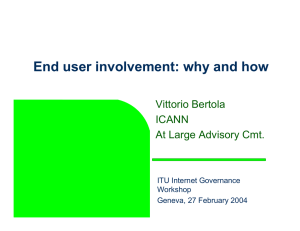
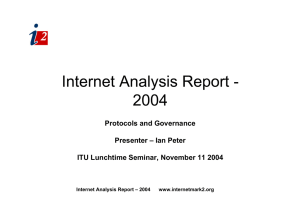
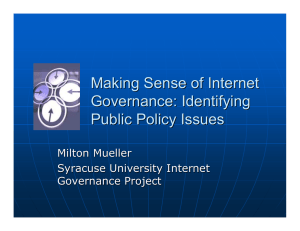
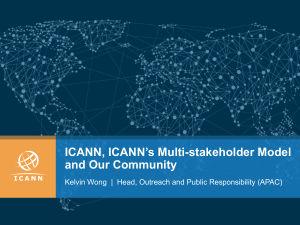
![Understanding Internet Focus Institutions [Session 6]](http://s2.studylib.net/store/data/013498335_1-a7543c01106339877633153c13852746-300x300.png)
